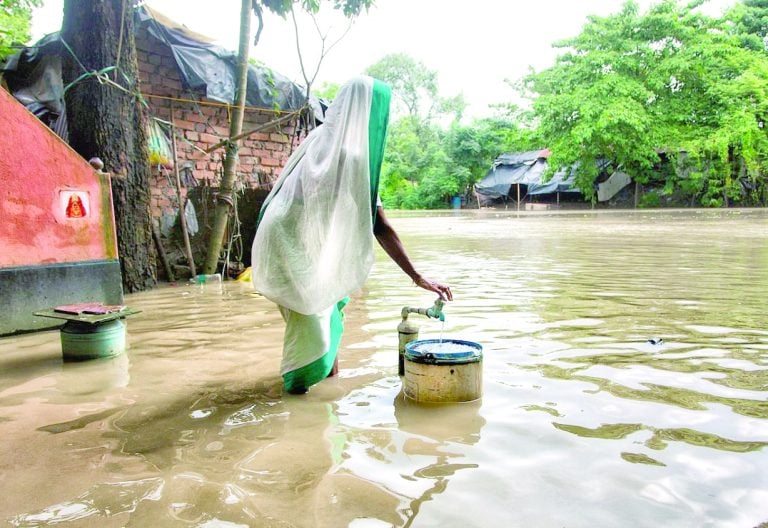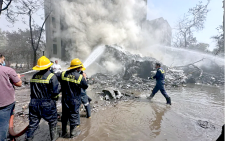Climate change puts drinking water safety at increased risk

Did you know that climate change affects the quality and safety of drinking water? Well, it is true, according to research by environmental scientists.
Experts warn of the increasing threat of contamination and the need to improve infrastructure to keep drinking water safe. Floods, wildfires, intense droughts and sea level rise, fuelled by climate change, are threatening water systems around the globe.
The devastations usually hit hardest in places with already stressed, or fragile, municipal systems.
Veteran Montana-based US journalist, Jim Robbins, writing in the latest edition of Yale Environment 360, recalls November 8, 2018, when a power line dropped into dry grass in the foothills of the Sierra Nevada mountains, north of Sacramento, and ignited the deadliest fire in California’s history.
“Powerful winds swept through Paradise and other smaller towns in the tinder-dry forest, killing 85 people, destroying 18,000 structures, and causing more than US$16 billion in damage. Among the victims was the city’s water system, poisoned by the toxins in the smoke,” recounts Robbins.
Former town manager Kevin Philips vividly remembers the smoke from burning trees, plastics – including PVC water pipes – and other materials containing benzene and other carcinogens.
“A year after the fire, testing revealed levels of benzene 80 times higher than the legal limit in some drinking samples,” he recalls.
The road to a healthy water supply has been long, requiring many rounds of flushing the system, testing and replacing pipes.
But this August, after seven years of work and expenditures of US$40 million, the town’s new water system will be finished and all toxic substances flushed.
Flooding poses a major threat to drinking water systems worldwide as the climate warms and the atmosphere holds ever more moisture. The problem is worse in countries without, or with minimal, water infrastructure.
Recent extreme flooding events in Chad, Niger and Pakistan flooded sewers and latrines. Pathogens were washed into drinking water, which resulted in outbreaks of diarrhoea and cholera.
In Chad, which was already suffering from a food crisis, contaminated floodwaters also destroyed stores of food as well as crops in fields.
Robbins also notes that high-intensity rain storms can also wash toxic chemicals from fertilised fields, industrial sites and roads, into streams and reservoirs.
The contaminants complicate the water-treatment process as systems overflow, equipment break down, filters clog, and more disinfectant is required.
Because many sewage and water treatment plants are built along streams and low-lying areas prone to flooding, climate change is expected to damage more of these facilities.
Such challenges increase the risk of contamination both immediately and over the long term.
Studies have shown that flooding and heavy rains can cause faecal matter and other contaminants from leaky septic tanks to seep into public and private wells.
Some 53 million people in the US rely on private wells, which are not regulated by the federal government, and are not subject to mandatory treatment for contaminants.
Toxic reaction
Droughts- made more frequent and intense by climate change, as perennially experienced in Kenya and the greater Horn of Africa – can also affect water quality.
When water levels are low, organic material, such as decomposing leaves and other vegetation, gets concentrated in surface water sources, which spurs treatment plants to use more disinfectant – typically chlorine.
Organic material can however react with chlorine to create two families of toxic disinfection by-products (DBP) – trihalomethanes and haloacetic acids, explain scientists.
Utilities face a balancing act- using too little chlorine could allow opportunistic pathogens to survive.
On the other hand, using too much chlorine could allow harmful DBPs to build up in drinking water.
A recent analysis found some evidence that trihalomethanes, even at levels below regulatory limits in the US and European Union, increase the risk of bladder and colorectal cancer over decades of consumption. Haloacetic acids are also considered a potential carcinogen.
In Mozambique, drought has led to a lack of clean water, leading to an increase in water-borne diseases. All around the globe, rural areas that lack advanced water treatment systems also suffer.
In Mozambique’s Nampula Province, climate-related drought has diminished rivers, shallow boreholes and wells.
The lack of clean water has contributed to rising cases of tropical diseases like scabies, schistosomiasis, and lymphatic filariasis, according to Doctors Without Borders.
In addition, the lack of clean water has also contributed to water-borne diseases like cholera and diarrhoea.
The solution: digging deeper and better-covered wells.
Fertiliser runoff and contaminated storm water from extreme rainfall, combined with warmer water temperatures, are also increasing the frequency and intensity of harmful algal blooms found in freshwater.
“After a massive algal bloom occurred in Lake Erie in the summer of 2014, residents of Toledo, Ohio, were warned not to drink their tap water because it contained cyanotoxins generated by thick green slicks of algae,” recalls Robbins.
Exposure to these naturally occurring compounds, through swimming in or drinking affected water, can cause serious illness and even death.
Experts say the risk of algal blooms, and their risk to drinking water, is growing.
According to Sean Corson, director of NOAA’s (National Oceanic and Atmospheric Administration) National Centre for Coastal Ocean Science Lake Erie’s blooms are starting earlier.
“They’re lasting longer. Their peaks are larger. So, by some measures, they’re getting worse,” he told Inside Climate News.
Ocean water is also threatening drinking water supplies as river volumes decline.
According to Robbins, the Mississippi River has experienced a drought over the last two tears, due to lack of precipitation and excessive heat.
The low river levels have allowed saltwater to travel from the Gulf of Mexico further upstream, threatening to contaminate New Orleans’ drinking water.
Saltwater intrusion
“Lately it’s been extremely low river,” he quotes Mark “Hobbo” Cognevich, who works on water issues as district representatives for Plaquemines Parish, at the mouth of the Mississippi.
“The seawater is rising and so it’s moving its way upriver against the freshwater coming down”.
Saltwater intrusion has become more frequent in the last few years, said Cognevich.
Last year, parish officials delivered bottled water to residents, and the utility occasionally trucks in reverse osmosis filters, or desalination units to supplement its water treatment until a new plant in Belle Chasse with reverse osmosis capabilities can be completed.
To cope with the growing risk of fires to its water system, such as the recent devastating wildfires in Los Angeles, to its water system, Paradise, California has learned hard lessons on how to prepare.
Utilities across the United States are working on various fronts to adapt to the changing water picture. In Paradise, to cope with the growing risk of fires, Philips revealed the city has learned on how to better prepare.
“We put in concrete meter boxes everywhere so they are more resilient to heat,” he said, adding that they use brass meters, no more plastic meters.
“And every house is equipped with a backflow device, so if a house to burn down there would no longer be the opportunity for a vacuum effect”.
Kenya, especially authorities in flood-prone areas (including those in the densely-populated capital city Nairobi) as well as in drought-affected counties could benefit from the hard lessons learned in California and New Orleans and Ohio.















